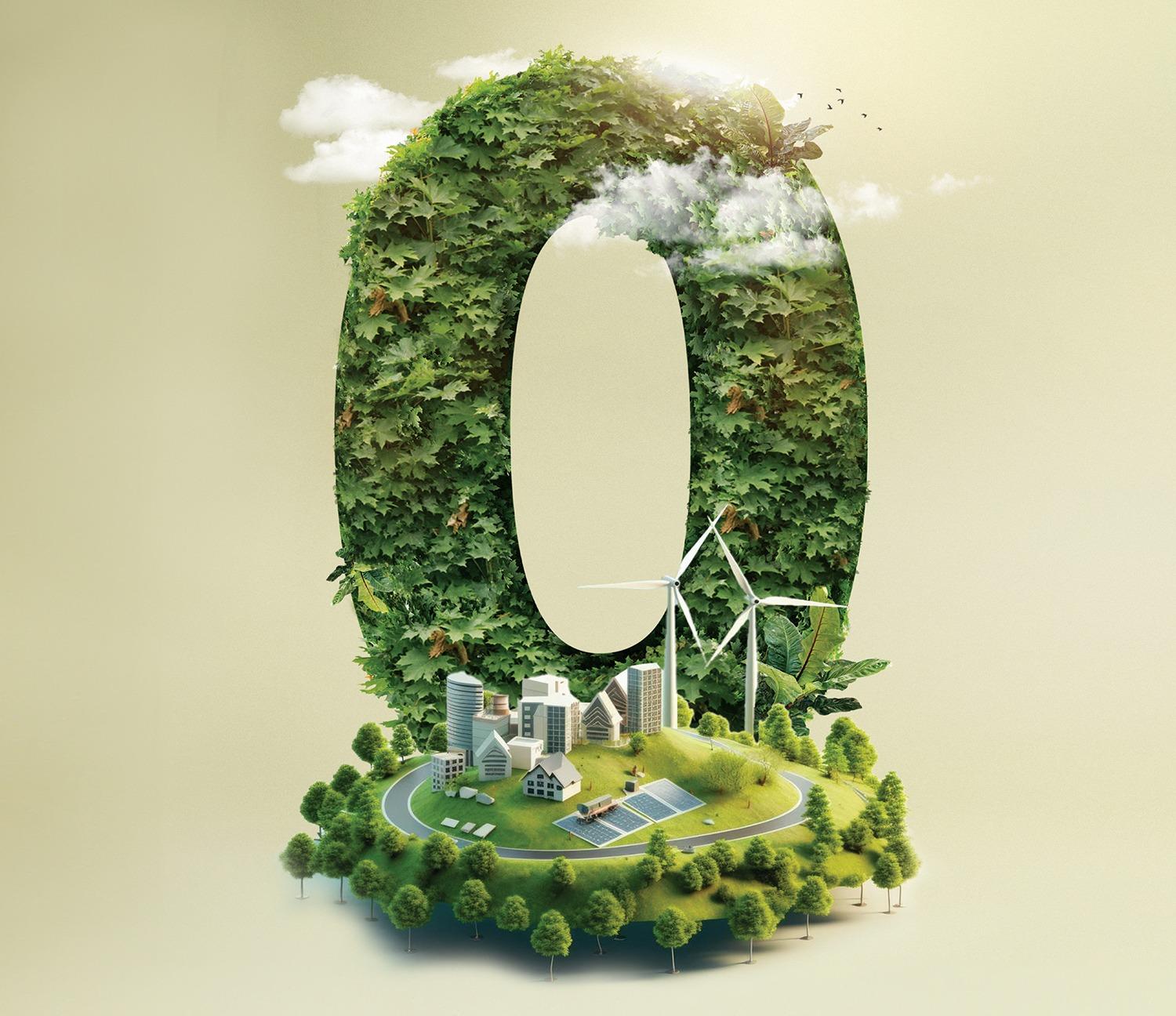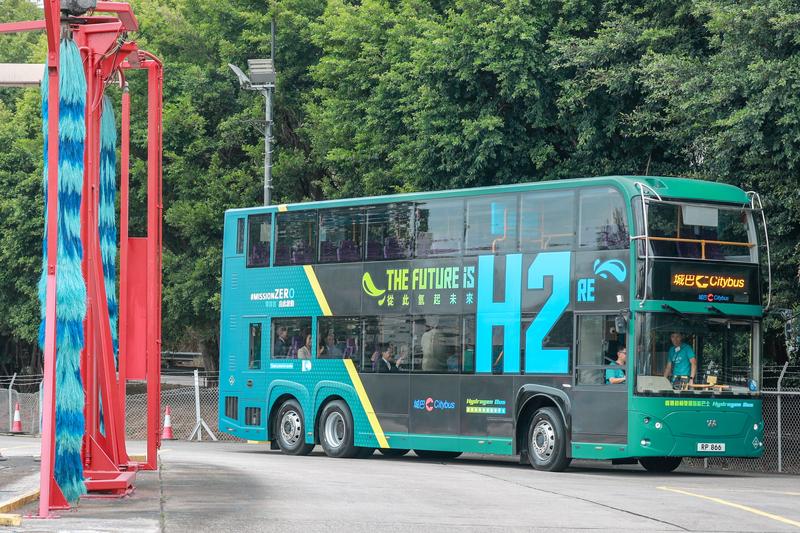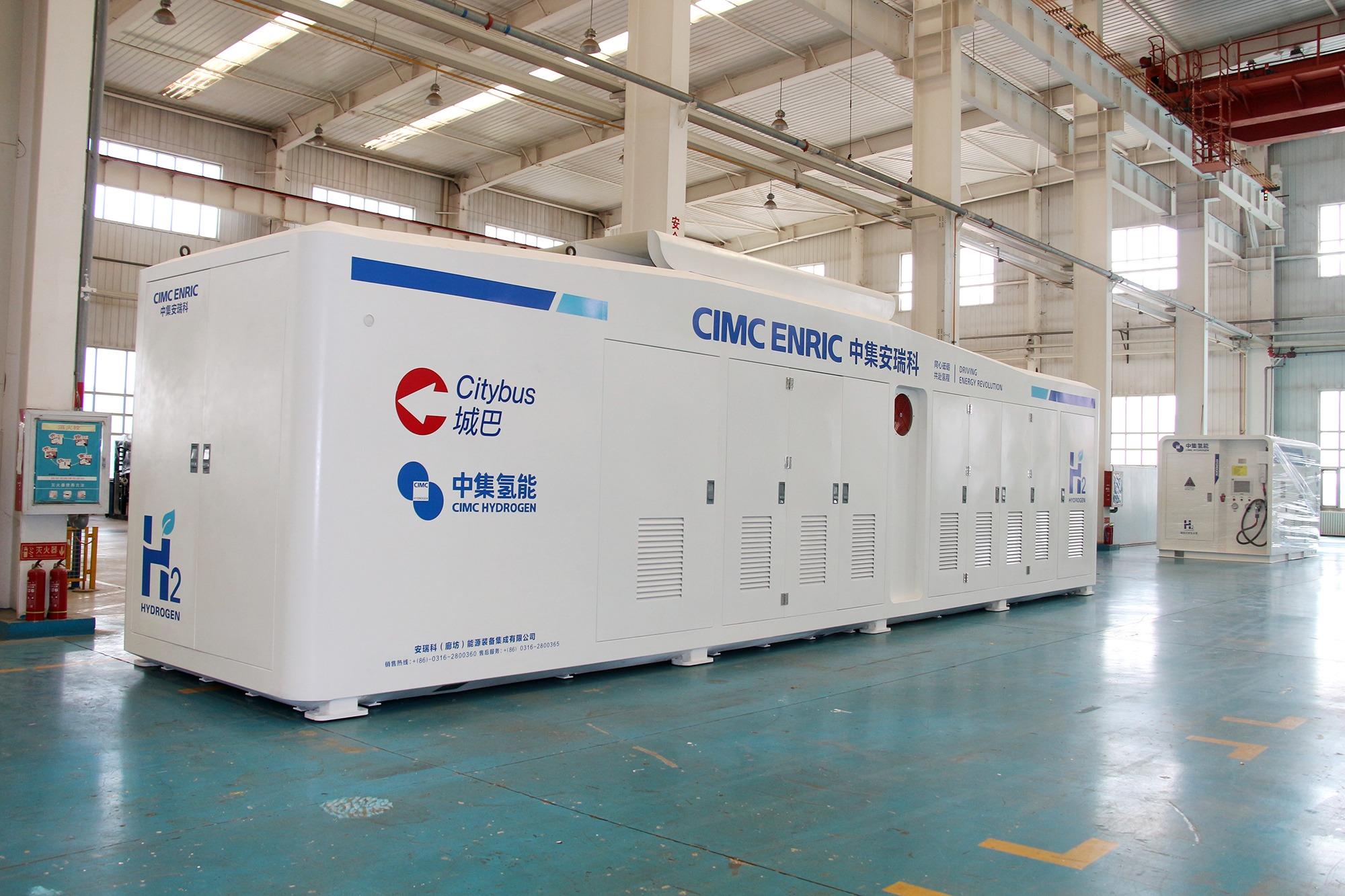To succeed in achieving its carbon neutrality goal, experts urge the city to shake off its reliance on fossil fuels, and turn to renewable energy in electricity generation. William Xu reports from Hong Kong.

The green, green grass of home is what many economies worldwide aspire to. The road ahead remains long and rough for many, including Hong Kong, as they seek to overcome hurdles in cutting greenhouse gas emissions and meeting their objectives.
The Hong Kong Special Administrative Region has set a lofty goal of achieving carbon neutrality by 2050, but is being held back by the city’s insatiable demand for electricity despite measures being rolled out to slash carbon emissions by promoting electric cars on the roads, and stepping up recycling of waste. The huge amounts of carbon emitted go to generating electricity to brighten up the “Pearl of the Orient”, with less than 1 percent of the electricity coming from renewable energy sources.
The Chinese mainland’s resources can help Hong Kong narrow the gap with other places in green energy transition.
Edward Lo Wai-chau, adjunct associate professor of the Department of Electrical and Electronic Engineering at the Hong Kong Polytechnic University
The SAR’s fuel portfolio for power generation comes from three key sources — about 48 percent is natural gas imported from the Chinese mainland via overground and submarine pipelines; a quarter is coal mostly bought from Indonesia and Russia; the rest is mostly accounted for by the nuclear energy provided by the Daya Bay nuclear power station — a joint venture between Guangdong province and Hong Kong power supplier CLP Group — that has been providing electricity to the city for almost three decades.
In line with Hong Kong’s go-green policies, the SAR authorities and power companies aim to stop using coal to generate power, as the black solid fuel contributes up to 44 percent of global carbon dioxide emissions. CLP and the other local power supplier, Hong Kong Electric, have been gradually reducing the use of coal in the past few decades. According to “Hong Kong’s Climate Action Plan 2050”, published in 2021, the city commits to phasing out the use of coal for daily power generation by 2035.
The two power firms will import more natural gas as substitutes for coal. In September, a new offshore liquefied natural gas terminal began operating east of the Soko Islands, a few kilometers southwest of Lantau Island. The station, co-owned by CLP and Hong Kong Electric, enables Hong Kong to buy and receive more natural gas globally.
Structural change
Natural gas is cleaner, but is still a fossil-based fuel. Natural gas combustion accounts for 22 percent of the world’s carbon emissions. To realize a zero-emission power industry, Hong Kong needs to shake off its dependence on fossil fuels and embrace more renewable energies.
The scale of renewable energy use in the city is less than 1 percent of the electricity needed — lagging behind other economies with populations similar to that of Hong Kong.
In Belgium, with a population of 11.59 million, 12 percent of the energy it consumes is generated by wind and solar photovoltaic. A third of the power used by 6.8 million people in Serbia in the Balkan Peninsula comes from renewables.
Singapore — one of Hong Kong’s long-standing competitors in the Asia-Pacific — used waste, biomass and solar to generate 4.4 percent of its electricity in the first half of this year.
Experts say Hong Kong needs more extensive adoption of renewable energies to attain its carbon neutrality goal, but many challenges remain to be overcome.
“It’s difficult for Hong Kong to produce a large amount of renewable energy itself as the city isn’t fed with continuous strong sunlight and winds,” explains Edward Lo Wai-chau, an adjunct associate professor of the Department of Electrical and Electronic Engineering at the Hong Kong Polytechnic University.
He said he believes the mainland’s resources can help Hong Kong narrow the gap with other places in green energy transition. “The northwestern regions of the mainland are rich in solar and wind energies,” Lo notes.
On the mainland, 85 percent of wind energy and 90 percent of solar energy come from the western regions. After meeting local demands, the electricity surplus produced by renewable energies, through the west-to-east power transmission program, will be transmitted to the eastern regions that rely heavily on electricity to support economic growth.
In 2022, Guangdong province received 200 billion kilowatt-hours from the western regions, more than 80 percent of which is generated by renewable energies, such as solar power and hydropower. On average, green power helps cities in the Guangdong-Hong Kong-Macao Greater Bay Area to cut coal consumption by about 57 million metric tons annually.
“One out of every 3 kWh of electricity consumed in the mainland cities of the Greater Bay Area comes from the western regions,” according to Chen Bing, general manager of a subsidiary of China Southern Power Grid, which operates grids in Guangdong, Yunnan, Guizhou and Hainan provinces, as well as Guangxi Zhuang autonomous region.
Lo has called for power facilities and connectivity between Hong Kong and mainland grids to be strengthened further for the city to import more energy.
Currently, Daya Bay’s nuclear power and other clean electricity from the mainland are imported into Hong Kong via the CSPG network, covering about 27 percent of local power consumption. This proportion will be raised to 35 percent after various improvements to the system are completed by 2025, says Tse Chin-wan, Hong Kong’s secretary for environment and ecology.
Although nuclear power is considered to be zero-emission energy, the radioactive fuels used in a nuclear power plant — Uranium-235 — aren’t renewable.
The SAR government also plans to build power receiving and conversion facilities at Tseung Kwan O to import more clean energy generated by nuclear and renewable resources from the mainland. The long-term objective is to raise the proportion of mainland zero-emission electricity in the local fuel structure to 60 to 70 percent by 2035.
Lo says more infrastructures should be considered, including an improved linkage system between two local power companies’ grids, to allow for emergency arrangements in times of instability.
Wind and solar power are seen as variable energy sources due to their fluctuating nature. It would be important to upgrade the stability and storage capacity of local grids as more and more electricity generated by renewable energies will be incorporated in the system, says Lo.
 Hong Kong's first hydrogen-powered double-decker bus. (ANDY CHONG / CHINA DAILY)
Hong Kong's first hydrogen-powered double-decker bus. (ANDY CHONG / CHINA DAILY)
Technical obstacles
Under its climate action plan, the SAR government pledged to lift the proportion of renewable energies for power generation to between 7.5 and 10 percent before 2035. To this end, local companies and scientists are actively exploring the potential of hydrogen.
Citybus — one of Hong Kong’s public bus operators — launched the first local hydrogen refueling station on Nov 30 to serve its planned hydrogen bus fleet. The company’s first double-decker hydrogen bus is expected to enter service in Kowloon next month.
Despite the progress made in using hydrogen, production remains a huge barrier. Unlike petroleum or sunlight, hydrogen can’t be mined or captured directly from nature. Instead, two mainstream ways of making hydrogen involve conversion of natural gases or water. It’s hard for both to achieve net-zero emissions under the current level of technology.
Hydrogen can be extracted from natural gas, but the process is still pollutant and, therefore, hydrogen produced in this way is called “grey hydrogen”, denoting its polluted way of production.
Towngas — Hong Kong’s sole citywide piped gas supplier — says it’s mulling an experimental project in Sai Kung by using the hydrogen separated from piped gas to generate electricity for supplying designated venues and electric vehicles.
It says hydrogen separated from its piped gas can be categorized as grey hydrogen. As a result, the company is exploring carbon capture technology — capturing and re-using the carbon dioxide emitted from combustion — to reduce greenhouse gas emissions during hydrogen production.
A better way to produce hydrogen is to use electricity to split water into oxygen and hydrogen gases. Hydrogen produced in this way is called “green hydrogen”. The electricity produced should have zero-carbon emissions too.
Then, it’s a chicken-and-egg problem. Power companies need green hydrogen to generate green electricity. But the electrolysis method requires green electricity to produce green hydrogen. Moreover, nine liters of fresh water are required on average to produce one kilogram of hydrogen via electrolysis. The consumption will be a great challenge for places lacking fresh water resources, such as Hong Kong.
Scientists are trying to find a solution. Ng Yun-hau, a professor with the School of Energy and Environment at City University of Hong Kong, discovered a method to produce hydrogen with visible lights by splitting water. His research team has developed a photocatalyst that can chemically react with lights, allowing the beams to split hydrogen from water.
The water-splitting process is similar to photosynthesis in plants, by which trees and bushes absorb sunlight, water and carbon dioxide to create oxygen and energies.
Ng’s findings earned him the 2019 Asia-Pacific Economic Cooperation Science Prize for Innovation, Research and Education.
He says the research is to enable the method to be applied to sewage too so that it would not consume a lot of fresh water while the photocatalytic system can be scaled up.
Local photovoltaic power generation can be a good supplement in the city’s energy strategy. Many local enterprises have installed photovoltaic panels in their parking lots or on rooftops to generate power.
Hong Kong Disneyland Resort has built the largest solar energy system in town. More than 7,500 panels have been installed at the resort’s 47 locations to supply power to its facilities. The system generates more than 3.3 million kWh of electricity each year, equivalent to the energy consumption of 1,000 three-person households, the resort told China Daily.
Technicians at the resort use a smart management system to monitor the operation and use of each solar panel in real time to ensure the stability of the solar power supply system and to maximize its efficiency.
 A pre-made hydrogen refueling station owned by Citybus. (PHOTO PROVIDED TO CHINA DAILY)
A pre-made hydrogen refueling station owned by Citybus. (PHOTO PROVIDED TO CHINA DAILY)
Green fundraiser
Besides realizing its decarbonization aims, Hong Kong should think about using its prowess in financial services to help the Greater Bay Area’s green agenda.
Article 6 of the Paris Agreement — the most significant global censuses on tackling climate change to date — provides approaches for economies to voluntarily cooperate in achieving their carbon emission reduction targets, including the trading of emission reductions among economies, companies and individuals.
The mainland opened its national carbon market two years ago. By late last year, the market’s cumulative volume of carbon emission allowances, meaning the permission to emit carbon, and turnover reached 223 million metric tons and 10.12 billion yuan ($1.42 billion) respectively.
However, Hong Kong’s inclusion in the mainland’s carbon trading market may not be ideal, says Lawrence Iu Chun-yip, executive director of Civic Exchange — a Hong Kong think tank focusing on environmental challenges.
He explains that allowing carbon trading may trigger higher electricity bills as power companies need to buy carbon emission allowances for every unit of electricity they produce with fossil energies. The additional costs will eventually be passed on to consumers.
Instead, Iu said he believes Hong Kong’s financial sector can help more green energy projects in the Greater Bay Area through fundraising.
As part of the government’s efforts to promote green finance, the Hong Kong Monetary Authority is drafting the Prototype of a Green Classification Framework for the city to define sustainable economic activities and has established local green finance criteria in line with international standards.
Iu said he believes it would be a prospective move to build up global investor confidence in Hong Kong’s role as a green energy fundraiser, which would greatly help turn the region’s green energy projects from ideas into reality.
Hong Kong can benefit further by building renewable energy generation projects on the mainland with local partners and transmitting more green electricity back to the city.
Contact the writer at williamxu@chinadailyhk.com


